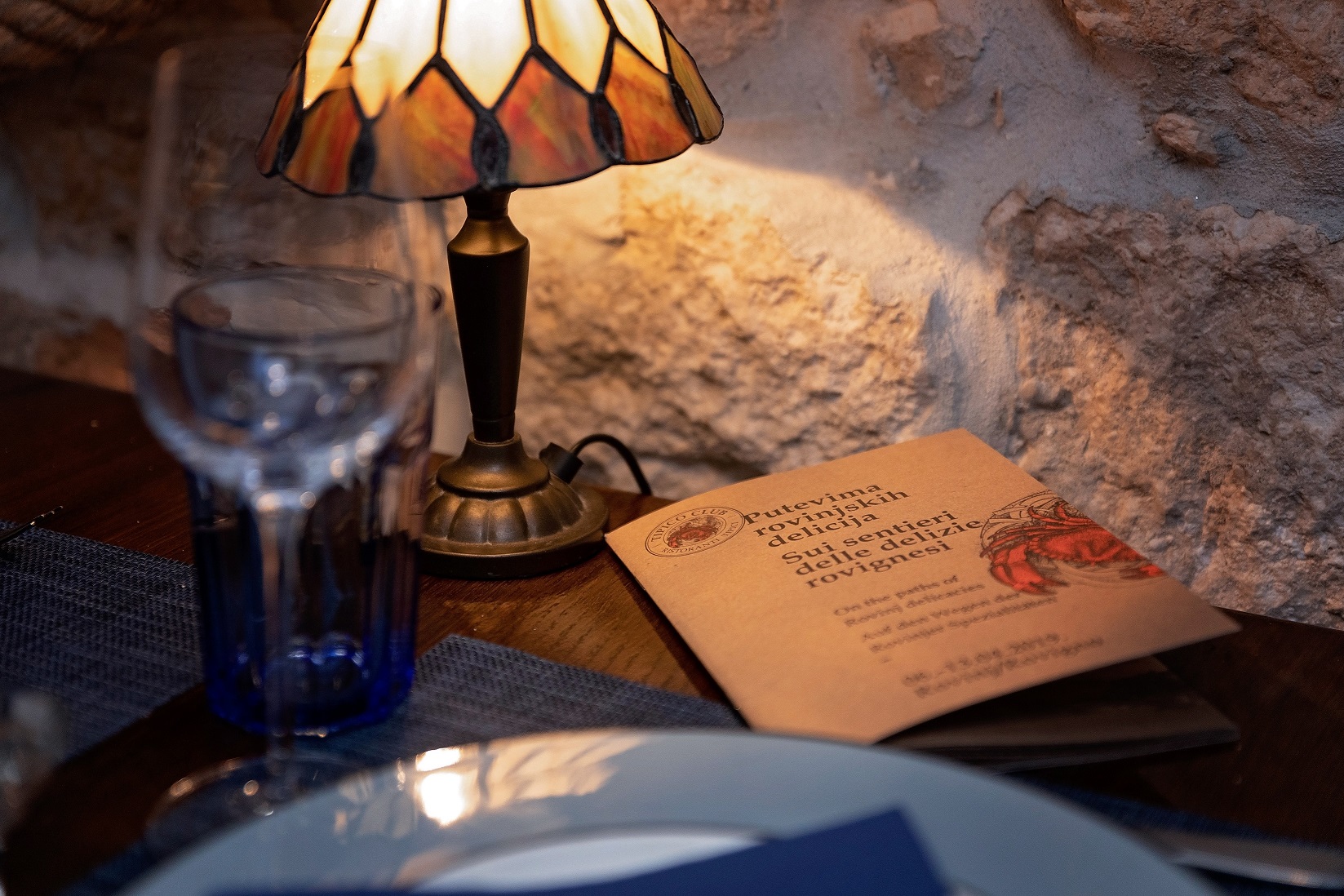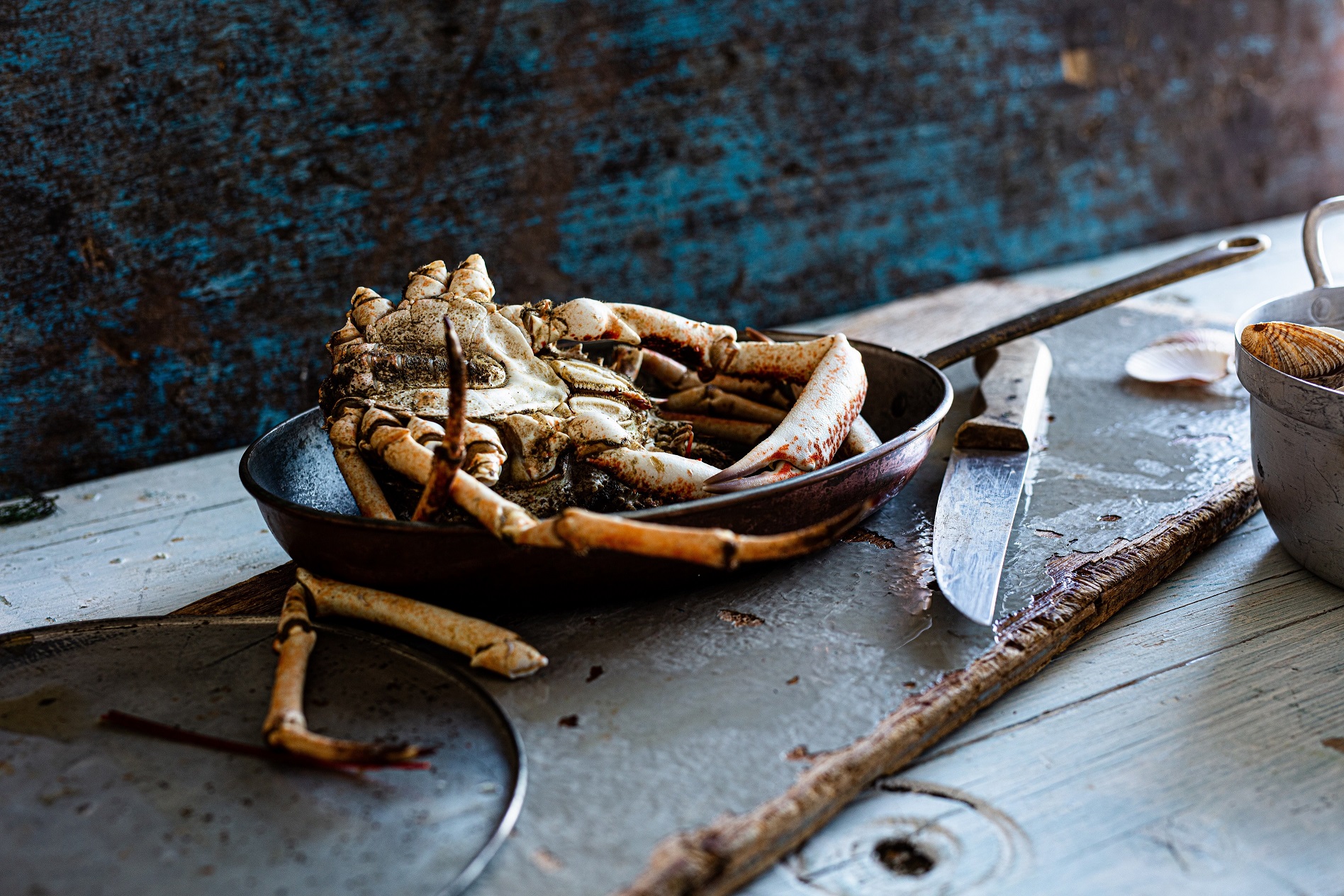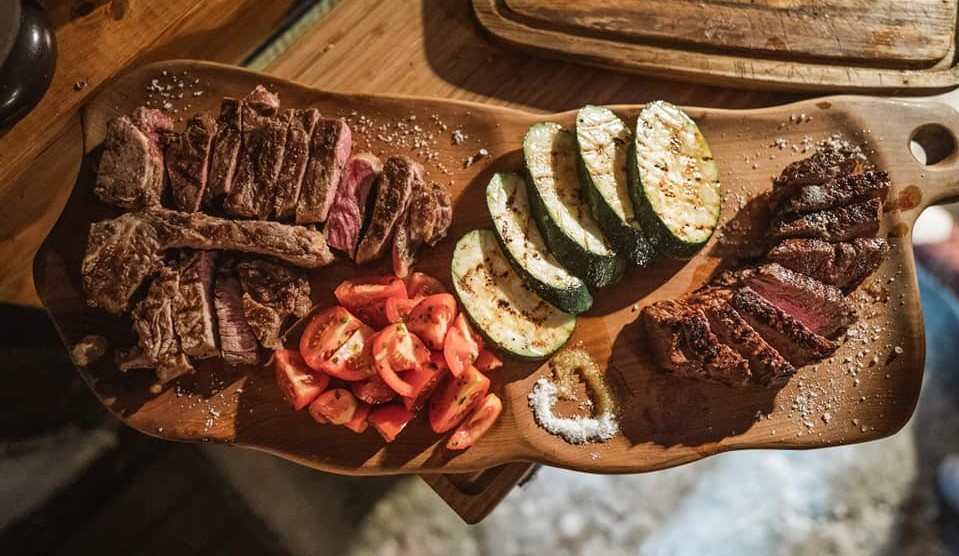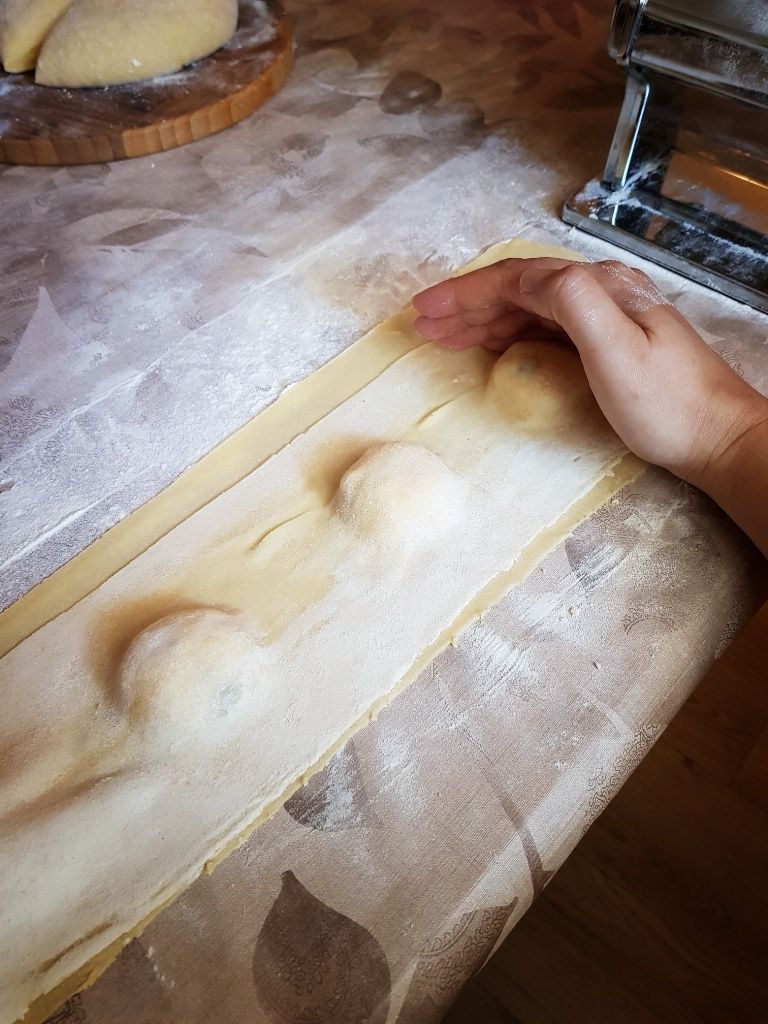Take the Paths of Rovinj Delicacies this May and Uncover Istria's Gourmet Offer
May 4, 2022 - All roads lead to Rovinj on the first May weekend, where a new spring edition of the unique gourmet event Paths of Rovinj Delicacies is held, justifiably attracting more and more visitors, gourmets, and lovers of Istrian specialties year after year.
From May 7 to 14, some of the most famous restaurants in Rovinj, especially for this occasion, will prepare famous local specialties made from indigenous ingredients of this region. In addition, all visitors will be able to taste local wines from local winemakers.
 If you are going to Istria, head to Brancin da Nino, Graciano, Fortuna, Dream, Santa Roma, or Štorija as fish and meat menus await you at promotional prices. Renowned chefs will prepare homemade seafood pljukanci, black cuttlefish risotto, cod and tuna carpaccio, veal steaks in an asparagus sauce, stuffed pork fillet with prosciutto and cheese, Istrian fuži with chicken žgvacet and many other top delicacies that are simply an unavoidable part of the Istrian region. In addition to a unique offer of specialties, the menus also include top local wines that go well with traditional Istrian cuisine, carefully selected to harmonize the entire gourmet experience.
If you are going to Istria, head to Brancin da Nino, Graciano, Fortuna, Dream, Santa Roma, or Štorija as fish and meat menus await you at promotional prices. Renowned chefs will prepare homemade seafood pljukanci, black cuttlefish risotto, cod and tuna carpaccio, veal steaks in an asparagus sauce, stuffed pork fillet with prosciutto and cheese, Istrian fuži with chicken žgvacet and many other top delicacies that are simply an unavoidable part of the Istrian region. In addition to a unique offer of specialties, the menus also include top local wines that go well with traditional Istrian cuisine, carefully selected to harmonize the entire gourmet experience.

To preserve the rich Istrian tradition but also to present well-known local dishes to all those who have not yet had the opportunity to taste them, the Rovinj Craftspeople's Association, Rovinj Tourist Board, and Maistra Tourist Company joined forces and created this irresistible gourmet story, which is undoubtedly responsible for the recognizability of Istrian beauties, both visual and delicious, around the world.

These delicacies can be tasted at a promotional price of 140 kuna per menu. A fantastic way to tickle your palate, don't miss out on this irresistible gourmet offer, and be sure to book your place on time!
Uncover all offers at the following link: https://www.rovinj-tourism.com/hr/kalendar/22464
For more, make sure to check out our dedicated lifestyle section.
Rešetka's Superior Summer Street Food Brings Fine-Dining Quality at Coastal Pop-ups
July 13, 2020 - In their first venture to the Croatian coast, Rešetka's summer menu brings fine-dining quality to seaside streets in 2020
Sometimes you just want a burger, a sandwich, or something you can just eat from your hands. But, just because you haven't got the time or can't be bothered with the faff of fine dining, that doesn't mean you're volunteering for a drastic drop in quality.
That's where Rešetka comes in. Street food providers renowned for sourcing and selling only quality meats, the grill specialists have been a highlight of Zagreb Burger Fest and several pop-ups in recent times. This summer, the experience that has won over the Croatian capital's burger connoisseurs can be found instead along the coast.
Rešetka owner Nikola Božić has embarked on the summer venture with chef Katarina Vrenc. You'll be able to find their new concept 'Fine Street Food by Reshetka & Katarina Vrenc' at several pop-up locations along the Adriatic this summer. They'll be visiting Istria, Kvarner and Dalmatia, including the islands of Cres and Pag.
Rešetka and Đurina Hiža are renowned for using only high quality, locally sourced produce within their dishes including, this year, beef from a hybrid of Japan's famed wagyu and Holstein, sourced from the first range herd of its kind in Croatia © Rešetka
With a commitment to cooking only with high quality, locally sourced produce and ingredients, the team is known to use premium meats and seafood for their dishes. This year they will offer beef from a hybrid of Japan's famed wagyu and Holstein, sourced from the first range herd of its kind in Croatia. Within a summer menu that combines the best of continental and coastal Croatian ingredients, you'll also find superior snacks such as rich pork belly paired with octopus.
Nikola Božić is also the proprietor of Đurina Hiža near Varaždinske Toplice. As recently covered in TCN, thanks to some quick and positive thinking, though the restaurant closed for a while in the Coronavirus lockdown, Nikola was able to adapt his business in order to remain successful during the period; relying on high quality, locally sourced ingredients, he became a bridge between the small producers he'd spent time finding, and those shopping online from their homes. Their 'Deda Goes Around the World' service delivered meats and other produce throughout Croatia during the restaurant's temporary closure.
If you're planning to visit Dubrovnik, Biograd, Pula, Premantura or Split this summer and can't face another pizza slice, kebab or burger of questionable origin, be sure to look out for the Rešetka logo. Fine Street Food by Reshetka & Katarina Vrenc will visit Plavica Bar on island Cres on 7 & 8 August and the Michelin-starred Boškinac on Pag in the middle of September. Further inland, they'll also be available at the High Grounds Festival in Varaždinske Toplice on 31 July, 1 & 2 August. Grab yourself a handful of delicious food and pick a spot to watch the stunning Croatian sunset, the Adriatic coast and its breathtaking backdrop has long been lacking exactly this standard of street food to accompany.
© Rešetka
New Gastronomic Event Celebrates Indigenous Istrian Cuisine
March 7, 2020 - All lovers of traditional Istrian cuisine and indigenous local food will be delighted by a new gastronomic event, which will be held from March 13 to April 12 at taverns in Kanfanar, Svetvincenat and Bale.
"Tradizione a tavola: jela iz pinjate" is a new gourmet story in which the first edition will feature four famous Istrian taverns, Kod Kancelir (Bale), Castello (Svetvincenat), Kononba Klarici (Klarici) and OPG Pekica (Pekici), reports Glas Istre.
The springtime is still an excellent time for exquisite, hearty meals that nourish the palate and invigorate the body, especially if they are made from homemade ingredients. At affordable prices for a three-course menu, the aforementioned taverns will offer all visitors a range of traditionally prepared, warm dishes, as prepared by their grandmothers, and developed by numerous generations of Istrians.
Director of the Svetvincenat Tourist Board Dean Pustijanac said that in tourism, it is always important to present what makes us special and what makes us different from others, and Istria’s rich gastronomic tradition is definitely their comparative advantage. Apart from the fact that it is imperative to pass on the recipes to the younger generations, traditional gastronomy is undoubtedly one of the motives for tourists to visit.
The menu will include, among other things, jota of cabbage and beets, noodles with fennel, salt or truffle, as well as traditional Istrian pastas, pljukanci, fuži, gnocchi and ravioli in various combinations, including pancetta and sheep cheese. In addition to homemade pasta, numerous guests will be able to taste Istrian prosciutto, wild asparagus, wild game or home-grown chicken, and Istrian Boskarin dishes. Local wines from Istrian winemakers will accompany all dishes.
“We were a very big family and we mostly were in agriculture, we had cows and sheep, and there was always a lot of work to do, but we made meals that didn't need to waste a lot of time, and again it was delicious and healthy. That's why a lot of pljukanci was made, and we ate them with grated dried skuta, pancetta, asparagus, and so on. It used to be a poor dish and today it is much appreciated and is available in all taverns and restaurants. The gnocchi was a little more delicate and appreciated, so we made them mostly on Sundays, with chicken sauce and the like,” said Maria Ferlin.
Alica Jelenic added that there were no refrigerators during their childhood, so everything was mostly consumed on the same day, and it was not uncommon for several women to get together to make homemade pasta to feed their larger family. It is these stories, with the demonstration of traditional pasta and dishes, that is a fragile but crucial thread that can bring tourists to Istria and turn them into grateful returning guests.
“This is a unique project that shows where our gastronomy comes from and how it drives tourism development. The mere fact that we have people around us who, in traditional ways, produce homemade food that we then market, is something precious and irreplaceable. I think that lies in the future of our tourism and economy, because it all revolves around our homemade prosciutto and cheese, homemade gnocchi and pljukanci and all other foods. Such manifestations show how tough and innovative our hospitality profession is, how much it nurtures the past because this is our future. Once again, a big thank you to all our daughters who pass on to their younger generations their great and valuable knowledge and love for traditional cuisine that otherwise would disappear in the face of modern culinary tendencies. This is another step where we have to show our big heart and once again prove to ourselves that we can launch an economic boom by basing all our catering on local products. This is the goal, and our tourism must be based on domestic agriculture, and then our guests will support us,” said the President of the Istrian Guild of Caterers at the Chamber of Crafts, Stanislav Briškoski.
The event is the result of the cooperation of the tourist boards of Svetvincenat, Bale and Kanfanar with the tourism company Maistra d.d. and the Rovinj Craftsmen's Association for the development of gourmet products. It is a combination of tradition and top Istrian gastronomy, which by its unquestionable quality, attracts the attention of true gourmet experience fans, continually enriching Istria's offer and putting it on the world gourmet map again, attracting more and more visitors from day to day. However, in all this, local guests should not be forgotten, who also need to be tempted by the quality offer of food and drinks at affordable prices, and that will be provided to them from next Friday.
To read more about lifestyle in Croatia, follow TCN’s dedicated page.
Traditional Croatian Recipes: Jota
February 10, 2019 — One of coastal Croatia's favorite winter warmers, jota is a traditional stew made with sauerkraut and/or sour turnip, kidney beans, potatoes, pork sausages, and often a variety of smoke-cured pork meat like belly, ribs, shanks, or trotters.
This hearty stew is typically flavored with onion and laurel leaves, though some add even marjoram or thyme, while most of its rich flavor comes from the so-called pešt or zaseka; a mash of bacon fat, garlic, and parsley.
Jota is a staple in Croatia's northwest and an easy beginner friendly one-pot dish which you will have no problem making. Here is the basic recipe:
Ingredients
1 onion, diced
200 g beans*
500 g sauerkraut or sour turnip, finely shredded
200 g dried pork meat or sausages
2-3 potatoes
4-5 laurel leaves
3-4 tbsp pešt/zaseka
3-4 tbsp olive oil or lard
salt and paprika; to taste
1 tsp peppercorns
Directions
1) In a large stockpot or Dutch oven heat oil or lard over medium-high heat until hot. Add chopped onion and sautée for about 5 minutes or until tender, golden-brown.
2) Try your sauerkraut (and/or sour turnip), and if you find it to be too tart, rinse it with water before you add it to the pot.
3) Then, add laurel leaves, sweet paprika, salt, and peppercorns. Add dried pork meat and beans. Cover with water and continue cooking on medium heat, half-covered.
4) After about 45 minutes of cooking, add cubed potatoes and pešt/zaseka. The latter will add not only thickness to your stew but also an incomparable richness of taste.
Lastly, stir well and let everything simmer together for another 30 minutes. Your jota is finished when the potatoes are cooked.
Dobar tek!
*Beans: if you're using dried beans, you will need to start making your jota the day before because they need to be soaked in cold water for at least 12 hours before they can be cooked. Alternatively, you can use canned beans and simply add them halfway through cooking time.
Stay tuned for more recipes by following TCN's gourmet page.
Traditional Croatian Recipes: Labinski Krafi
December 17, 2018 — Back when the basic ingredients of this recipe were scarce and costly, the famous Labinski krafi were traditionally prepared only for the most festive occasions like weddings and christenings. Today, this delectable pasta filled with an aromatic cheese mixture is an essential part of the common Istrian Christmas feast menu.
Labinski krafi are basically sweet ravioli but what is special about this particular variety is that in Labin, krafi are served two ways: either with a savory ragù (meat-based sauce commonly served with pasta) or as a dessert.
This recipe might seem a little daunting but if you have a pasta maker that you've used at least once, you are only a few steps away from successfully making one of the most delicious Istrian specialties.
Pasta dough
300g flour (type 00)
pinch of salt
1 whole egg
2 egg yolks
water, as needed
Filling
300g young cheese, grated
200g matured cheese, grated
150g granulated sugar
1/2 cup rum-soaked raisins
1 whole lemon zest
1 whole egg
2 egg whites
1 tsp vanilla essence
pinch of salt
breadcrumbs, if needed
1) To make the pasta dough, use a fork or tips of your fingers to incorporate the ingredients together until everything is well combined. Start kneading and work the dough until you activate the gluten in the flour and the dough becomes elastic.
Though kneading is no easy work, there's really no secret to it. Basically, you are done when you develop upper body of a heavyweight boxer or when you notice you have a smooth, lump-free ball of dough; whichever comes first.
Use plastic wrap to cover the dough and put it in the fridge to rest for at least 30 minutes before you use it. Meanwhile, you can make the filling.
Tip: As a rule of thumb, for a classic egg pasta dough, most recipes will instruct you to use 1 whole egg per every 100 grams of flour. However, in this recipe, don't be tempted to use 3 whole eggs because extra egg whites will make the dough too chewy and springy, whereas using only yolks gives it a nice soft texture.
2) To make the filling, combine all the ingredients in a large bowl and mix well using a fork. If the mixture seems a bit runny, add some breadcrumbs.
As for the cheese, you can use either cow or sheep cheese, or a combination of both. I prefer to use 300 grams of young, hard sheep cheese, grated more coarsely, and 200 grams of aged, parmesan-like cow cheese, finely grated.
3) Here comes the fun part! Dust your worktop with flour so that the pasta sheets don't stick to it. Clamp the pasta maker to the side of your worktop, and start feeding the dough through the rollers.
Start with the thickest setting, and gradually adjust the rollers until you get a thin pasta sheet suitable for ravioli. Repeat until you've used all the dough. You can make as many sheets you like, but making them in pairs is more convenient.

4) To make the krafi, place an equal amount of filling every 5cm (see photo above), cover it with the second pasta sheet, and lightly press around each portion of the filling to force the air out (see photo below). This step can be skipped, but if you leave the air locked inside, it will make your krafi look all wrinkly once they're cooked. Finally, use a classic ravioli stamp-cutter (or a glass) to cut out the krafi.
5) Bring a pot of salted water to a rolling boil, and cook them. This shouldn't take longer than 2-3 minutes; krafi are finished cooking when they float to the surface.
Traditionally, if enjoyed as a dessert, Labinski krafi are served either simply sprinkled with some more grated cheese or coated in buttered breadcrumbs, but since you've already done all this work, why not take it up a notch and make a delicious caramel-based sauce with coarsely ground toasted walnuts? Dobar tek!

Stay tuned for more delicious recipes by following TCN's gourmet page.
Croatian Restaurant Listed Among Best in the World
The Croatian gastronomic scene is increasingly gaining recognition of excellence, and that is evidenced by the progress that makes the hard work of Croatian restaurateurs and chefs recognized, and ultimately profitable. The last great recognition came from La Liste, which lists 1,000 of the best restaurants of the world formed by the opinion of international experts in the field of gastronomy and wine.


